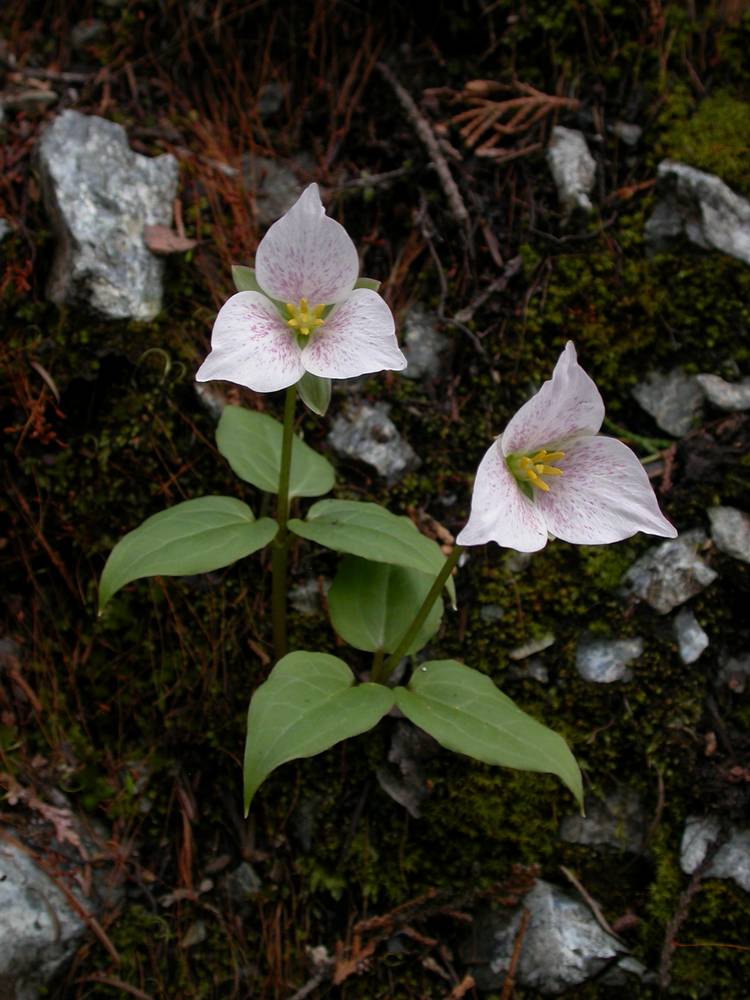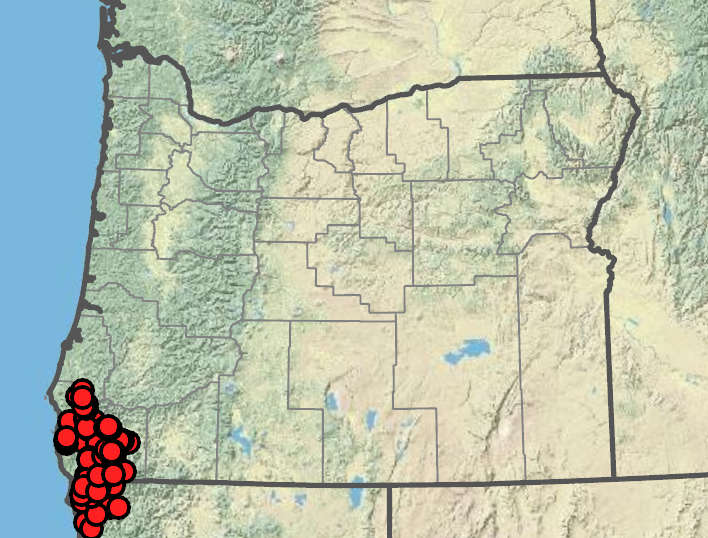Trillium cernuum
Trillium rivale
brook trillium, brook wakerobin
1.7–11 cm × 0.8–6 cm, blue-green; glossy; leathery;
apex acute to acuminate;
base lanceolate to cordate;
petioles (0.5)1– 3(6) cm.
1–2, 4–20 cm, glabrous.
pedicel 2-10 cm;
sepals 3, green, lanceolate or ovate to oblong, 10–23 × 4–8(11)mm;
margins entire;
apex rounded to apiculate;
petals erect to spreading; ovate-cordate to orbicular, 1.3–2.8(3) × (0.8)1–2.4 cm, white, usually with dark purple spots;
base rounded to cuneate;
margins entire;
apex apiculate to acuminate;
veins inconspicuous or sometimes with pale venation;
stamens 6–15 mm; erect;
filaments white;
anthers straight, 3–6 mm, yellow;
ovary ovoid, 3–9 × 4 mm, white to cream, weakly 6-angled;
stigmas recurved, 2–4 mm, white to cream.
globose; greenish white.
Trillium cernuum
Trillium rivale
Stream banks, talus slopes, forest clearings, generally in serpentine soils. Flowering Mar–Jul. 50–1300m. CR, Sisk. CA. Native.
This species is sometimes placed in its own monotypic genus, Pseudotrillium.
Tamra Prior



